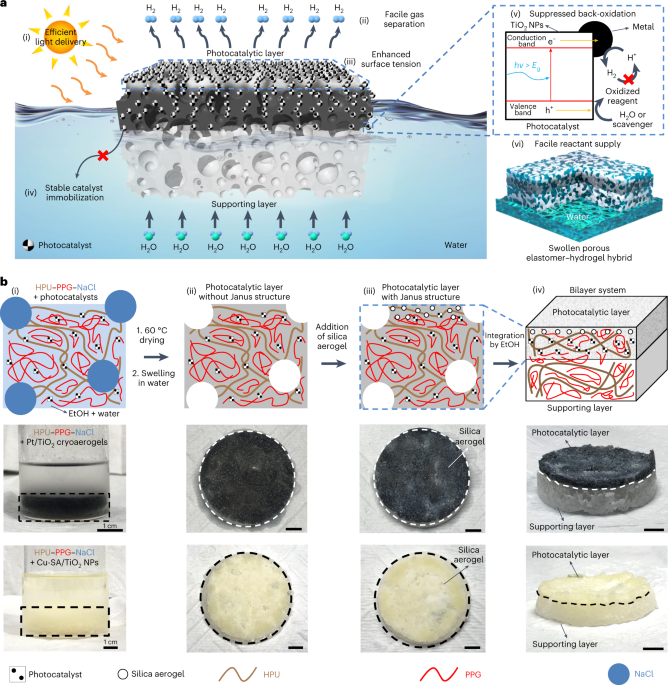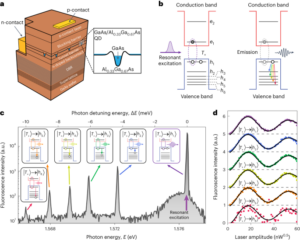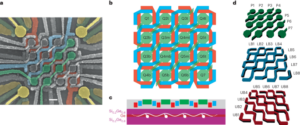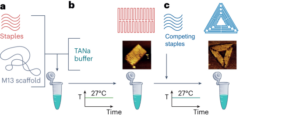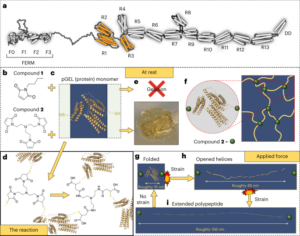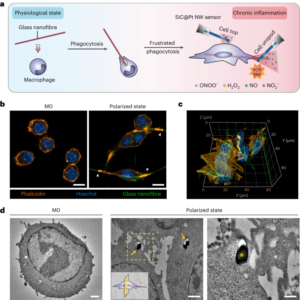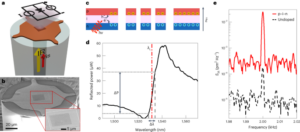
Schultz, D. M. & Yoon, T. P. Solar synthesis: prospects in visible light photocatalysis. Science 343, 1239176 (2014).
Lee, B.-H. et al. Reversible and cooperative photoactivation of single-atom Cu/TiO2 photocatalysts. Nat. Mater. 18, 620–626 (2019).
Wang, L. et al. Surface strategies for catalytic CO2 reduction: from two-dimensional materials to nanoclusters to single atoms. Chem. Soc. Rev. 48, 5310–5349 (2019).
Mitchell, S., Qin, R., Zheng, N. & Pérez-Ramírez, J. Nanoscale engineering of catalytic materials for sustainable technologies. Nat. Nanotechnol. 16, 129–139 (2021).
Lee, B.-H. et al. Electronic interaction between transition metal single-atoms and anatase TiO2 boosts CO2 photoreduction with H2O. Energy Environ. Sci. 15, 601–609 (2022).
Hoffmann, M. R. et al. Environmental applications of semiconductor photocatalysis. Chem. Rev. 95, 69–96 (1995).
Liu, X. et al. Noble metal-metal oxide nanohybrids with tailored nanostructures for efficient solar energy conversion, photocatalysis and environmental remediation. Energy Environ. Sci. 10, 402–434 (2017).
Kunz, L. Y. et al. Artificial inflation of apparent photocatalytic activity induced by catalyst-mass-normalization and a method to fairly compare heterojunction systems. Energy Environ. Sci. 12, 1657–1667 (2019).
Guo, C., Ran, J., Vasileff, A. & Qiao, S.-Z. Rational design of electrocatalysts and photo(electro)catalysts for nitrogen reduction to ammonia (NH3) under ambient conditions. Energy Environ. Sci. 11, 45–56 (2018).
Rahman, M. Z., Kwong, C. W., Davey, K. & Qiao, S.-Z. 2D phosphorene as a water splitting photocatalyst: fundamentals to applications. Energy Environ. Sci. 9, 709–728 (2016).
Chen, S., Takata, T. & Domen, K. Particulate photocatalysts for overall water splitting. Nat. Rev. Mater. 2, 17050 (2017).
Cargnello, M. et al. Engineering titania nanostructure to tune and improve its photocatalytic activity. Proc. Natl Acad. Sci. USA 113, 3966–3971 (2016).
Zhao, D. et al. Boron-doped nitrogen-deficient carbon nitride-based Z-scheme heterostructures for photocatalytic overall water splitting. Nat. Energy 6, 388–397 (2021).
Ning, C. et al. Bandgap engineering in semiconductor alloy nanomaterials with widely tunable compositions. Nat. Rev. Mater. 2, 17070 (2017).
Gao, C. et al. A photoresponsive rutile TiO2 heterojunction with enhanced electron–hole separation for high-performance hydrogen evolution. Adv. Mater. 31, 1806596 (2019).
Kim, J. H. et al. Toward practical solar hydrogen production—an artificial photosynthetic leaf-to-farm challenge. Chem. Soc. Rev. 48, 1908–1971 (2019).
Gordon, T. R. et al. Nonaqueous synthesis of TiO2 nanocrystals using TiF4 to engineer morphology, oxygen vacancy concentration, and photocatalytic activity. J. Am. Chem. Soc. 134, 6751–6761 (2012).
Chen, X. et al. Increasing solar absorption for photocatalysis with black hydrogenated titanium dioxide nanocrystals. Science 331, 746–750 (2011).
Wang, Y. et al. Current understanding and challenges of solar-driven hydrogen generation using polymeric photocatalysts. Nat. Energy 4, 746–760 (2019).
Zhou, L. et al. Light-driven methane dry reforming with single atomic site antenna-reactor plasmonic photocatalysts. Nat. Energy 5, 61–70 (2020).
Cestellos-Blanco, S. et al. Photosynthetic semiconductor biohybrids for solar-driven biocatalysis. Nat. Catal. 3, 245–255 (2020).
Zhang, H. et al. Bacteria photosensitized by intracellular gold nanoclusters for solar fuel production. Nat. Nanotechnol. 13, 900–905 (2018).
Ghosh, I. et al. Organic semiconductor photocatalyst can bifunctionalize arenes and heteroarenes. Science 365, 360–366 (2019).
Lang, X., Chen, X. & Zhao, J. Heterogeneous visible light photocatalysis for selective organic transformations. Chem. Soc. Rev. 43, 473–486 (2014).
Zhou, L. et al. Quantifying hot carrier and thermal contributions in plasmonic photocatalysis. Science 364, 69–72 (2019).
Choi, K. M. et al. Plasmon-enhanced photocatalytic CO2 conversion within metal–organic frameworks under visible light. J. Am. Chem. Soc. 139, 356–362 (2017).
Ghosh, S. et al. Conducting polymer nanostructures for photocatalysis under visible light. Nat. Mater. 14, 505–511 (2015).
Simon, T. et al. Redox shuttle mechanism enhances photocatalytic H2 generation on Ni-decorated CdS nanorods. Nat. Mater. 13, 1013–1018 (2014).
Hisatomi, T. & Domen, K. Reaction systems for solar hydrogen production via water splitting with particulate semiconductor photocatalysts. Nat. Catal. 2, 387–399 (2019).
Wang, Q. et al. Scalable water splitting on particulate photocatalyst sheets with a solar-to-hydrogen energy conversion efficiency exceeding 1%. Nat. Mater. 15, 611–615 (2016).
Tan, B. et al. Immobilized covalent triazine frameworks films as effective photocatalysts for hydrogen evolution reaction. Nat. Commun. 12, 6596 (2021).
Nishiyama, H. et al. Photocatalytic solar hydrogen production from water on a 100-m2 scale. Nature 598, 304–307 (2021).
Pan, L. et al. Hierarchical nanostructured conducting polymer hydrogel with high electrochemical activity. Proc. Natl Acad. Sci. USA 109, 9287–9292 (2012).
Wu, H. et al. Stable li-ion battery anodes by in-situ polymerization of conducting hydrogel to conformally coat silicon nanoparticles. Nat. Commun. 4, 1943 (2013).
Plumeré, N. et al. A redox hydrogel protects hydrogenase from high-potential deactivation and oxygen damage. Nat. Chem. 6, 822–827 (2014).
Weingarten, A. S. et al. Self-assembling hydrogel scaffolds for photocatalytic hydrogen production. Nat. Chem. 6, 964–970 (2014).
Yuk, H., Lu, B. & Zhao, X. Hydrogel bioelectronics. Chem. Soc. Rev. 48, 1642–1667 (2019).
Huebsch, N. et al. Matrix elasticity of void-forming hydrogels controls transplanted-stem-cell-mediated bone formation. Nat. Mater. 14, 1269–1277 (2015).
Lin, Y. T., Lai, S. N. & Wu, J. M. Simultaneous piezoelectrocatalytic hydrogen-evolution and degradation of water pollutants by quartz microrods@few-layered MoS2 hierarchical heterostructures. Adv. Mater. 32, 2002875 (2020).
Jung, D. et al. Highly conductive and elastic nanomembrane for skin electronics. Science 373, 1022–1026 (2021).
Li, C. H. et al. A highly stretchable autonomous self-healing elastomer. Nat. Chem. 8, 618–624 (2016).
Choi, S. et al. Highly conductive, stretchable and biocompatible Ag–Au core–sheath nanowire composite for wearable and implantable bioelectronics. Nat. Nanotechnol. 13, 1048–1056 (2018).
Wolff, C. M. et al. All-in-one visible-light-driven water splitting by combining nanoparticulate and molecular co-catalysts on CdS nanorods. Nat. Energy 3, 862–869 (2018).
Freytag, A. et al. Tailoring composition and material distribution in multicomponent cryoaerogel for application in photocatalysis. ACS Appl. Nano Mater. 1, 6123–6130 (2018).
Chang, F. M., Sheng, Y. J. & Tsao, H. K. Superhydrophobic floatability of a hydrophilic object driven by edge effect. Appl. Phys. Lett. 95, 73–76 (2009).
Hu, Z. & Chen, G. Novel nanocomposite hydrogels consisting of layered double hydroxide with ultrahigh tensibility and hierarchical porous structure at low inorganic content. Adv. Mater. 26, 5950–5956 (2014).
Uekert, T., Pichler, C. M., Schubert, T. & Reisner, E. Solar-driven reforming of solid waste for a sustainable future. Nat. Sustain. 4, 383–391 (2021).
Zhao, X. & Jin, H. Investigation of hydrogen diffusion in supercritical water: a molecular dynamics simulation study. Int. J. Heat Mass Transf. 133, 718–728 (2019).
Matsunaga, N., Hori, M. & Nagashima, A. Measurement of mutual diffusion coefficients of gases by the Taylor method: measurements on H2–air, H2–N2, and H2–O2 systems. Heat. Trans. Asian Res. 31, 182–193 (2002).
- SEO Powered Content & PR Distribution. Get Amplified Today.
- PlatoAiStream. Web3 Data Intelligence. Knowledge Amplified. Access Here.
- Minting the Future w Adryenn Ashley. Access Here.
- Source: https://www.nature.com/articles/s41565-023-01385-4
- ][p
- 1
- 10
- 11
- 12
- 13
- 14
- 20
- 2011
- 2012
- 2014
- 2015
- 2016
- 2017
- 2018
- 2019
- 2020
- 2021
- 2022
- 22
- 23
- 24
- 26
- 27
- 28
- 2D
- 30
- 39
- 49
- 50
- 7
- 70
- 8
- 9
- a
- activity
- AL
- all-in-one
- Alloy
- am
- Ambient
- Ambient Conditions
- Ammonia
- and
- apparent
- Application
- applications
- article
- artificial
- AS
- asian
- At
- autonomous
- Bacteria
- battery
- between
- Black
- BONE
- boosts
- by
- CAN
- carbon
- CDS
- challenge
- challenges
- chen
- click
- combining
- compare
- concentration
- conditions
- conducting
- Consisting
- content
- contributions
- controls
- Conversion
- cooperative
- COVALENT
- Current
- Design
- Diffusion
- distribution
- double
- driven
- dry
- dynamics
- e
- E&T
- Edge
- effect
- Effective
- efficiency
- efficient
- Electronic
- Electronics
- energy
- engineer
- Engineering
- enhanced
- Enhances
- environmental
- Ether (ETH)
- evolution
- fairly
- films
- For
- formation
- frameworks
- from
- Fuel
- Fundamentals
- future
- generation
- Gold
- High
- high-performance
- highly
- HOT
- http
- HTTPS
- hydrogen
- i
- improve
- in
- increasing
- inflation
- interaction
- investigation
- ITS
- large-scale
- layered
- light
- LINK
- Low
- Mass
- material
- materials
- Matrix
- measurements
- mechanism
- metal
- methane
- method
- molecular
- mutual
- nano
- Nanomaterials
- Nature
- Noble
- novel
- object
- of
- on
- organic
- overall
- Oxygen
- plato
- Plato Data Intelligence
- PlatoData
- polymer
- Practical
- Production
- prospects
- Rational
- reaction
- s
- scalable
- Scale
- SCI
- selective
- semiconductor
- Silicon
- simulation
- simultaneous
- single
- site
- Skin
- solar
- solar energy
- solid
- stable
- strategies
- structure
- Study
- Surface
- sustainable
- sustainable future
- Systems
- tailored
- Technologies
- The
- thermal
- Titanium
- to
- toward
- transformations
- transition
- under
- understanding
- using
- via
- visible
- W
- Waste
- Water
- wearable
- widely
- with
- within
- wu
- X
- zephyrnet
- Zhao

